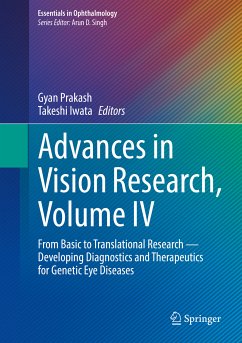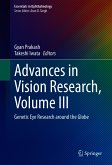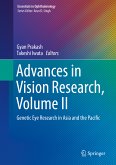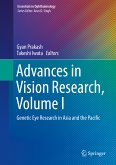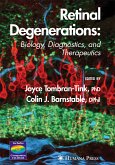Advances in Vision Research, Volume IV (eBook, PDF)
From Basic to Translational Research - Developing Diagnostics and Therapeutics for Genetic Eye Diseases
Redaktion: Prakash, Gyan; Iwata, Takeshi


Alle Infos zum eBook verschenken

Advances in Vision Research, Volume IV (eBook, PDF)
From Basic to Translational Research - Developing Diagnostics and Therapeutics for Genetic Eye Diseases
Redaktion: Prakash, Gyan; Iwata, Takeshi
- Format: PDF
- Merkliste
- Auf die Merkliste
- Bewerten Bewerten
- Teilen
- Produkt teilen
- Produkterinnerung
- Produkterinnerung

Hier können Sie sich einloggen

Bitte loggen Sie sich zunächst in Ihr Kundenkonto ein oder registrieren Sie sich bei bücher.de, um das eBook-Abo tolino select nutzen zu können.
This fourth volume in the series Advances in Vision Research describes importance advancements in basics to translational research, including new therapeutics for genetic eye diseases. Recent US FDA approval of the first gene therapy for an inherited retinal disease, due to a mutation in the RPE65 gene, has led to an upsurge in translational eye research. The coverage in this volume includes corneal diseases, myopia, cataract, glaucoma, inherited retinal diseases, inherited optic neuropathy, and other genetic eye diseases. New developments such as the application of artificial intelligence in…mehr
- Geräte: PC
- ohne Kopierschutz
- eBook Hilfe
- Größe: 26.74MB
![Advances in Vision Research, Volume III (eBook, PDF) Advances in Vision Research, Volume III (eBook, PDF)]() Advances in Vision Research, Volume III (eBook, PDF)105,95 €
Advances in Vision Research, Volume III (eBook, PDF)105,95 €![Advances in Vision Research, Volume II (eBook, PDF) Advances in Vision Research, Volume II (eBook, PDF)]() Advances in Vision Research, Volume II (eBook, PDF)113,95 €
Advances in Vision Research, Volume II (eBook, PDF)113,95 €![Advances in Vision Research, Volume I (eBook, PDF) Advances in Vision Research, Volume I (eBook, PDF)]() Advances in Vision Research, Volume I (eBook, PDF)161,95 €
Advances in Vision Research, Volume I (eBook, PDF)161,95 €![Retinal Degenerative Diseases (eBook, PDF) Retinal Degenerative Diseases (eBook, PDF)]() Retinal Degenerative Diseases (eBook, PDF)233,95 €
Retinal Degenerative Diseases (eBook, PDF)233,95 €![HOX Gene Expression (eBook, PDF) HOX Gene Expression (eBook, PDF)]() Spyros PapageorgiouHOX Gene Expression (eBook, PDF)161,95 €
Spyros PapageorgiouHOX Gene Expression (eBook, PDF)161,95 €![A Handbook of Gene and Cell Therapy (eBook, PDF) A Handbook of Gene and Cell Therapy (eBook, PDF)]() Clévio NóbregaA Handbook of Gene and Cell Therapy (eBook, PDF)89,95 €
Clévio NóbregaA Handbook of Gene and Cell Therapy (eBook, PDF)89,95 €![Retinal Degenerations (eBook, PDF) Retinal Degenerations (eBook, PDF)]() Retinal Degenerations (eBook, PDF)105,95 €
Retinal Degenerations (eBook, PDF)105,95 €-
-
-
Dieser Download kann aus rechtlichen Gründen nur mit Rechnungsadresse in A, B, BG, CY, CZ, D, DK, EW, E, FIN, F, GR, HR, H, IRL, I, LT, L, LR, M, NL, PL, P, R, S, SLO, SK ausgeliefert werden.
- Produktdetails
- Verlag: Springer Nature Singapore
- Seitenzahl: 388
- Erscheinungstermin: 3. Juni 2024
- Englisch
- ISBN-13: 9789819944361
- Artikelnr.: 70893184
- Verlag: Springer Nature Singapore
- Seitenzahl: 388
- Erscheinungstermin: 3. Juni 2024
- Englisch
- ISBN-13: 9789819944361
- Artikelnr.: 70893184
- Herstellerkennzeichnung Die Herstellerinformationen sind derzeit nicht verfügbar.
